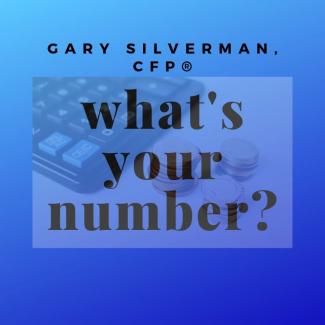
"Your Number" is not Set In Stone
Seems like there’s a good amount of talk about “Your Number.” Specifically, the number of dollars you need to have to be able to retire. There have even been a few advertising campaigns built around this concept. What I want to do today is discuss what this number means and the problems with believing any calculation can be set in stone.
Studies show that when most people plan their retirement, they don’t run any calculations to see if it is doable. If you are one of the enlightened who has broken out a calculator, then you likely know the basics: Figure out the money that’s guaranteed going to come to you (like a pension or Social Security), then subtract your anticipated retirement expenses. The result will tell you the surplus (rare) or deficit (more likely) of cash flow you’ll have in retirement.
Once you have that number (we’ll assume it is a deficit), you then figure out just how much in investments you’ll need to fund the deficit. That dollar value of investments is “Your Number.” This begs the question: How do you figure out how much in investments you’ll need? You could use my favorite thumb-rule of 4%: if your deficit is $20,000 a year, you’ll need $500,000 of investments to have 4% of it equal $20,000.
Now, the low-growth doomsayers will tell you that 3% is a better draw rate. In that case you’ll need about $667,000. The withdrawal adjustment camp says your draw rate should be as high as 5.5%, which means you might only need $364,000. Oh, and none of these take taxes into account.
Of course, all these numbers assume you got your deficit right. Will your guaranteed income sources keep up with your expenses? Social Security has an inflation adjustment built into it. What about your pension? And about those expenses…generally retirement spending levels off or even declines over the decades. That is, unless you begin (or continue) having health issues where out-of-pocket costs can begin eating into an otherwise good plan.
And about those investments…THE number can’t possibly be the same for someone who invests only in CDs compared to someone who has all their money in the stock market or someone who is half into each. How does that affect things?
The point of all this is not to alarm you or to encourage you to give up trying to figure out what you’ll need to successfully retire. It’s to remind you that a chart, a quick 3-minute online calculator, or a thumb rule can’t possibly take into consideration all the factors that affect what Your Number is.
Given that the number assumes a particular set of circumstances to be true, you’ll need to understand how changes in your life or the world around you affect what is a living number, not a stagnant one. Knowledge of the number is good; ensuring the number is accurate is better; but neither divorces you from the need to keep an eye on it.
Gary Silverman, CFP® is the founder of Personal Money Planning, LLC, a Wichita Falls retirement planning and investment management firm and author of Real World Investing

